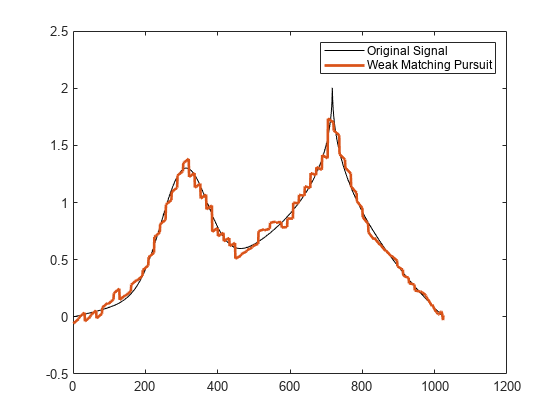matchingPursuit
Description
[
recovers the sparse signal Xr,YI,I,R] = matchingPursuit(A,Y)Xr using the
sensingDictionary
A and sensor measurement Y. By default, the sparse
recovery algorithm is matching pursuit. The I output is the support of
Xr identified by the matching pursuit algorithm. The
YI output is the best fit for Y corresponding to
the bases indexed by the elements of I, and R is
the residual.
[
specifies options using one or more name-value arguments in addition to the input argument
in the previous syntax. For example, Xr,YI,I,R] = matchingPursuit(___,Name=Value)[Xr,YI,I,R] =
matchingPursuit(A,Y,Algorithm="WMP") specifies the weak matching pursuit
algorithm.
Examples
Input Arguments
Name-Value Arguments
Output Arguments
Version History
Introduced in R2022a
